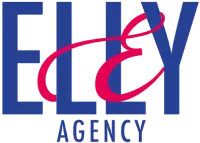Graphic design and the different types of design?

What you need to know about Graphic Design
- Visual identity
- Marketing and advertising.
- The user interface.
- The edition
- The packaging
- 2D or 3D video animation
There is a whole strategy and a very in-depth analysis in order to promote a project, which is why it differs between one project and another.
Graphic design requires a certain skill from graphic designers. Generally, the frequent sector of activity of graphic designers makes it easy for them to achieve the ideas of their clients.
Visual identity is essential for the development of a product or service. People tend to identify this or that product by their logos or the related colors... a certain consistency is necessary to achieve a harmony of colors and it is the hard work of the graphic designer who is responsible for this task.
Many companies rely primarily on their advertising or marketing budget. It's completely normal to be able to communicate your products/services to your customers, but it's also essential to communicate a strong and effective message. The graphic designer has to take everything into consideration, text/colors/typography etc.) one also has to prepare for the printable version as well because some designs are not as presentable on digital versions as the printable one.
The design of pages and applications or also user interface must reflect design consistency with the brand identity. In addition, the interface must be properly set up for ideal operation. As a result, the graphic designer must make sure to think of everything... it's really the architecture and the concept of the interface that appeals to the client.
Editing and packaging is an essential design for tangible products and you have to concentrate in order to finalize the designs with the client. Think about the text, colors, materials etc. is a must because there is no going back after printing.
When it comes to animation, it's really a world apart and it's hardly an easy task for the graphic designer. There is a lot of work to be done with high-performance software and masterful creativity. Animation is widely used these days as future generations adapt more easily to visuals. Videos are generally used to highlight the benefits of the product displayed while exposing the brand or identity of the customer.

